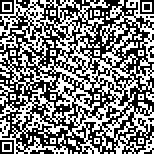| 摘要: |
| [摘要] 目的 基于静息态功能磁共振成像(rs-fMRI),通过独立成分分析(ICA)方法观察难治性抑郁症(TRD)与健康人视觉网络的差异,探索经皮耳迷走神经刺激(taVNS)对TRD患者视觉网络功能的即刻调节效应。方法 选取2018年1月至2021年10月就诊于中国中医科学院广安门医院心身医学科的40例TRD患者作为TRD组,经广告招募年龄、性别匹配的40名健康者作为健康组。TRD组在taVNS治疗即刻前后行rs-fMRI扫描,健康组仅进行基线期rs-fMRI扫描。对TRD组和健康组进行17项汉密尔顿抑郁量表(HAMD-17)及抑郁自评量表(SDS)评分。利用ICA方法获得属于视觉网络的静息态网络(RSN),分析TRD组与健康组视觉网络的差异脑区,将差异脑区与临床量表进行偏相关性分析,并对TRD组治疗前后的视觉网络进行比较分析。结果 与健康组比较,TRD组在左侧梭状回(t=4.005,P<0.005)、左侧舌回(t=4.465,P<0.005)的功能连接(FC)值升高,左侧梭状回的FC值与SDS评分呈负相关(r=-0.424,P<0.05),左侧舌回的FC值与HAMD-17评分呈正相关(r=0.348,P<0.05)。taVNS治疗后,TRD组左侧梭状回FC值显著降低(t=-4.828,P<0.005)。结论 TRD患者视觉网络的内部FC存在异常,可能是其重要的神经病理机制,且taVNS可对TRD患者异常的视觉网络脑区内部FC进行调节,这可能是taVNS调节TRD临床症状的脑效应基础。 |
| 关键词: 难治性抑郁症 独立成分分析 视觉网络 功能连接 经皮耳迷走神经刺激 |
| DOI:10.3969/j.issn.1674-3806.2023.04.03 |
| 分类号:R 445.2 |
| 基金项目:国家自然科学基金面上项目(编号:82174282,81774433);中国中医科学院广安门医院科研项目结余经费课题(编号:2022094);中国中医科学院创新工程(编号:CI2021A03301) |
|
| Exploration on the immediate regulatory effect of transcutaneous auricular vagus nerve stimulation on visual networks in treatment-resistant depression based on independent component analysis |
|
LUO Yi, CHEN Li-mei, SUN Ji-fei, et al.
|
|
Department of Radiology, Guang′anmen Hospital, China Academy of Chinese Medical Sciences, Beijing 100053, China
|
| Abstract: |
| [Abstract] Objective To observe the differences in visual network(VN) between treatment-resistant depression(TRD) and healthy individuals by using independent component analysis(ICA) method based on resting-state functional magnetic resonance imaging(rs-fMRI) and to explore the immediate regulatory effect of VN function in the TRD patients by using transcutaneous auricular vagus nerve stimulation(taVNS). Methods A total of 40 patients diagnosed as TRD at the Department of Psychosomatic Medicine of Guang′anmen Hospital, China Academy of Chinese Medical Sciences from January 2018 to October 2021 were selected as the TRD group. Other 40 healthy subjects matched in age and gender were recruited through advertisement as the healthy group. The rs-fMRI scans were performed on the TRD group before and after immediate treatment of taVNS, and only baseline period rs-fMRI scans were performed on the healthy group. The 17-Item Hamilton Depression Scale(HAMD-17) and Self-Rating Depression Scale(SDS) scores were administered to the TRD group and the healthy group. The resting-state network(RSN) belonging to the VN was obtained using ICA method, and the differential brain areas of the VN in the TRD group and the healthy group were analyzed, and the differential brain areas were analyzed for bias correlation with clinical scales, and the VNs in the TRD group before and after treatment were compared. Results Compared with the healthy group, the TRD group had elevated functional connectivity(FC) values in the left fusiform(t=4.005, P<0.005) and left lingual gyrus(t=4.465, P<0.005). The FC values in the left fusiform were negatively correlated with SDS scores(r=-0.424, P<0.05), and the FC values in the left lingual gyrus were positively correlated with the HAMD-17 scores(r=0.348, P<0.05), and the FC value of the left fusiform decreased in the TRD group after taVNS treatment(t=-4.828, P<0.005). Conclusion The presence of abnormal intrinsic FC in the visual network of TRD patients may be an important neuropathological mechanism, and taVNS can modulate the intrinsic FC in the abnormal visual network brain regions of the TRD patients, which may be the basis of the brain effect of taVNS in regulating clinical symptoms of TRD. |
| Key words: Treatment-resistant depression(TRD) Independent component analysis(ICA) Visual network(VN) Functional connectivity(FC) Transcutaneous auricular vagus nerve stimulation(taVNS) |

